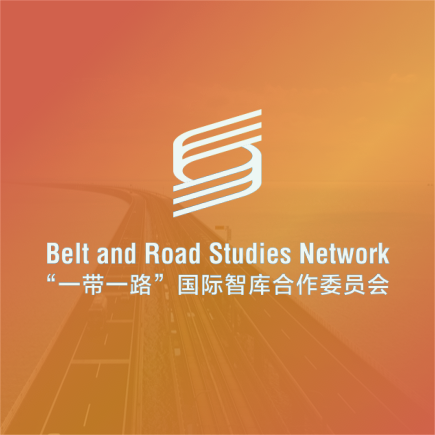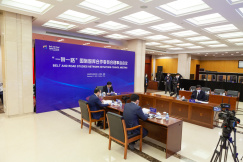
Melissa Leach, Director, Institute of Development Studies (IDS), UK
Speech at BRSN in Beijing on April 24, 2019
China’s Belt and Road Initiative (BRI), first announced by President Xi Jinping in 2013, is extraordinarily ambitious in both its scope and scale. The BRI seeks to build a global infrastructure that interlinks Asia, Africa and Europe by land and sea, through energy and telecommunications, and through people-to-people exchanges. It articulates China’s view of the role it has to play on the world stage. Spanning over 70 countries and around 65 per cent of the world’s population, it has already generated approximately 140 agreements that affect around 6 billion people and account for approximately one third of the world’s Gross Domestic Product. In terms of its scope and scale, the BRI represents a real opportunity to provide the infrastructure and create the sustainable development required to meet the needs of a world population which is expected to reach 9.7 billion by 2050.
The BRI is by no means static. As it has evolved it has become more international in its outlook, comprising individuals and organisations from across disciplines, sectors and countries, necessitated in part by the level of international investment required, and potentially in reaction to a retreat from global leadership from countries such as the US. Its focus has broadened beyond trade and infrastructure, with more emphasis placed on sustainable development outcomes and also the digital technology and software that allows people to interact and move across spaces and countries seamlessly.
Yet the BRI is also the focus of intense, and often polarised, debate. While some point to the promise, others highlight social, economic, environmental, political and security risks associated with BRI investments. At the extreme, the BRI is portrayed by critics as a new imperial project that boosts Chinese economic and political power while undermining the sovereignty and development of countries along the Belt and Road, impoverishing them through debt, exclusionary enclave investment and dispossession.
There are no ‘right’ answers to this debate. The BRI is immensely broad and varied (indeed almost anything can be packaged as part of it). Ideas about what risks are, and why they matter, and how they add up with benefits, vary enormously according to different actors and perspectives. For investors, the key risks might be that investments will not yield the expected return. Governments in BRI countries worry about risks of indebtedness, or failure to contribute to national growth. For local communities, there are different risks – will an infrastructure project dispossess them of their land? Undermine their livelihoods? And more. These are all different risk-framings. There are many different interests, and complex politics.
To cut through the hype and illuminate these complexities we badly need rigorous, robust evidence – of what is actually happening on the ground, who or what is gaining or losing, and what the different interests and perspectives are – and so that investment actions and policies can be properly designed and evaluated. Here, think tanks and research institutions have key roles to play. At their best they are able to bring independent analysis and evidence – of project impacts and effects, country case studies, or broader effects of BRI initiatives – and draw out the implications for policy, practice and politics. This is part of what we do at the Institute of Development Studies (IDS), a global research and learning organisation for equitable and sustainable change which in partnership with the University of Sussex is ranked first in the world for development studies by the QS University Rankings; we are also the second ranked international development think tank in the Global Go-To index. We believe passionately that cutting-edge research, knowledge and mutual learning are crucial in shaping the transformations needed to realise development – which we understand as the reduction of poverty and inequalities, the acceleration of sustainability and the building of more inclusive and secure societies. In line with our engaged excellence approach, we are committed to collaborating closely with, governments, civil society, businesses, citizens, researchers and many others to realise this positive change. Engaged excellence means not just high quality research, but also the co-construction of knowledge with societal actors, the mobilisation of evidence for impact, and the building and sustaining of strong partnerships. IDS has been working with partners to tackle complex development challenges in this way since 1966. Today we work with more than 350 partners in almost every country but have particularly deep ones with China, and in relation to China’s engagement in other countries. Through our Centre for Rising Powers and Global Development; our partnership with the Development Research Center of the State Council and its Centre for International Knowledge on Development; our role as UK anchor institution for the China International Development Research Network; our work with Chinese universities, and our strategy to create a China Development Hub as a focus for all this activity, we’re engaged in mutual knowledge creation, sharing and learning to support China’s growing role in international development.
A key focus for the research and knowledge that think tanks can provide must be the relationships between the BRI and the other biggest initiative on the world stage – the UN Sustainable Development Goals. These provide the overarching framework for development up to 2030 globally, nationally and locally. They draw our attention to tackling poverty and inequality and gender inequality; to ensuring food and livelihoods and employment; and to ‘green’ and ‘blue’ agendas around land, water and resources. The goals are not separate siloes but a package; there are important synergies between the 17 goals, and vital cross-cutting principles such as Leave no-one Behind. Countries along the Belt and Road (like China, the UK, and others) are struggling to achieve the SDGs. How can we ensure that BRI projects actually help them? High level statements on the BRI talk of its greenness, and its inclusiveness. They talk of a natural alignment between the BRI and the SDGs. How can we ensure that this inspiring rhetoric translates into reality on the ground? What, in practice, are the synergies – but also the tensions – between BRI investments and the SDGs, and between different SDGs, in particular countries and settings?
More evidence is badly needed, and country case studies, in particular, will be of particular value. However, the picture emerging from studies so far is mixed. In environmental terms, for instance, it is now widely accepted that meeting the climate change SDG (13) (and the Paris agreement to limit warming to 1.5 degrees) will require massive divestment from fossil fuels and most to be left in the ground. China domestically has disinvested in coal and has become a world leader in low carbon, particularly solar, energy. Yet Chinese state-owned enterprises are investing in coal fired power plants in a number of countries in Central Asia. The governments might request these, and they undoubtedly contribute to low-cost energy access for their populations – helping to meet other aspects of the SDGs, such as no poverty (goal 1) perhaps – yet they certainly create tensions and trade-offs with goal 7 (renewable energy) and goal 13 (climate action).
There is also evidence of infrastructure projects creating environmental and social risks, working against goals around no poverty (1), food security (2), inequality (10) and gender equity (5). Evidence from African countries such as Cameroon, the Democratic Republic of Congo (DRC) and Uganda highlight the environmental and social risks experienced by local communities as result of investment projects. Projects such as the Kribi Port Project in Cameroon have resulted in loss of habitats and forests, and the social risks to communities include loss of livelihoods and homes through land acquisition which has not been properly compensated. Although tenure data is improving, the problem of land acquisition and compensation continues to pose a challenge, compounded by the issue of poor legal documentation.
The impact of infrastructure developments on economic growth and job creation (goal 8) are also questionable. Some BRI projects have created indebtedness, undermining sustained growth. In other cases there may be growth but with limited positive impacts on employment. For example through BRI investment Cambodia has been able to upgrade its role in the value chain in the textile industry, helping the country to diversify economically. However, this diversification also brings risks including increased resource use and reduced levels of job creation despite higher skills in the labour market.
These are only a few examples, and more evidence of the synergies and tensions between the BRI and the SDGs is clearly needed. A bank of case studies that capture these relationships, and highlight best practice and examples of maximising the synergies and reducing the tensions, needs to be developed and made globally available and accessible.
We also need a strengthened evidence-base around what works in terms of aligning financial and sustainable development outcomes, understanding and managing risk, implementing and applying standards and building the capacity of national governments, local communities, and private contractors to work together successfully to manage projects.
There also needs to be investment in consultation and capacity building. Donors including development and multilateral agencies and development banks should consider how they could invest in building the necessary capacities within BRI countries to more effectively manage and prioritise investment in alignment with their own national sustainable development goals. They should also identify ways in which they can facilitate and support consultation and engagement between BRI national governments, civil society, local communities and project investors, so that those directly affected have a greater say.
Thus, the potential exists to align the ambitions of the BRI around policy coordination, connectivity, trade, financial integration and cultural exchange with the SDG framework and its focus on people, planet and power. Given the scope and scale of the BRI it has the potential to contribute to global public goods. However partners across national governments in developed and developing countries, investors and private sector organisations, multilateral agencies and regional banks need to work together to conceptualise how this might be achieved, as in essence this was not the original intention or ambition of the BRI. There is sometimes a mismatch between the BRI recipient countries and Chinese companies around how far investments and their outcomes can or should be aligned with the SDGs. National governments in countries have a role to play in articulating their own development strategies in relation to BRI investments.
Finally, to discuss these issues properly requires also that we embrace the reality of the power relations at stake in BRI investments, and discussion about them – both material power and resources, and the power to narrate what is going on through political statements and the media. We need to attend more closely to whose voices are being heard and whose are excluded – and to how this might this need to change. Analysing power and politics, and supporting developmental alternatives to be surfaced and articulated, is perhaps the most important role of all for think tanks in this dynamic context.
DISCLAIMER
The views expressed in this article are entirely those of the author(s) own, and not those of the Belt and Road Studies Network (BRSN).
今年1月,新冠疫情突然而至。为了防止疫情扩散,我国采取了史无前例的交通阻断及人流限制措施,这也为我国农业农村经济发展带来了巨大挑战。

the Belt and Road Studies Network (BRSN) has been launching a call since January 2023 for reports from think tanks and researchers around the world.
2023-03-07